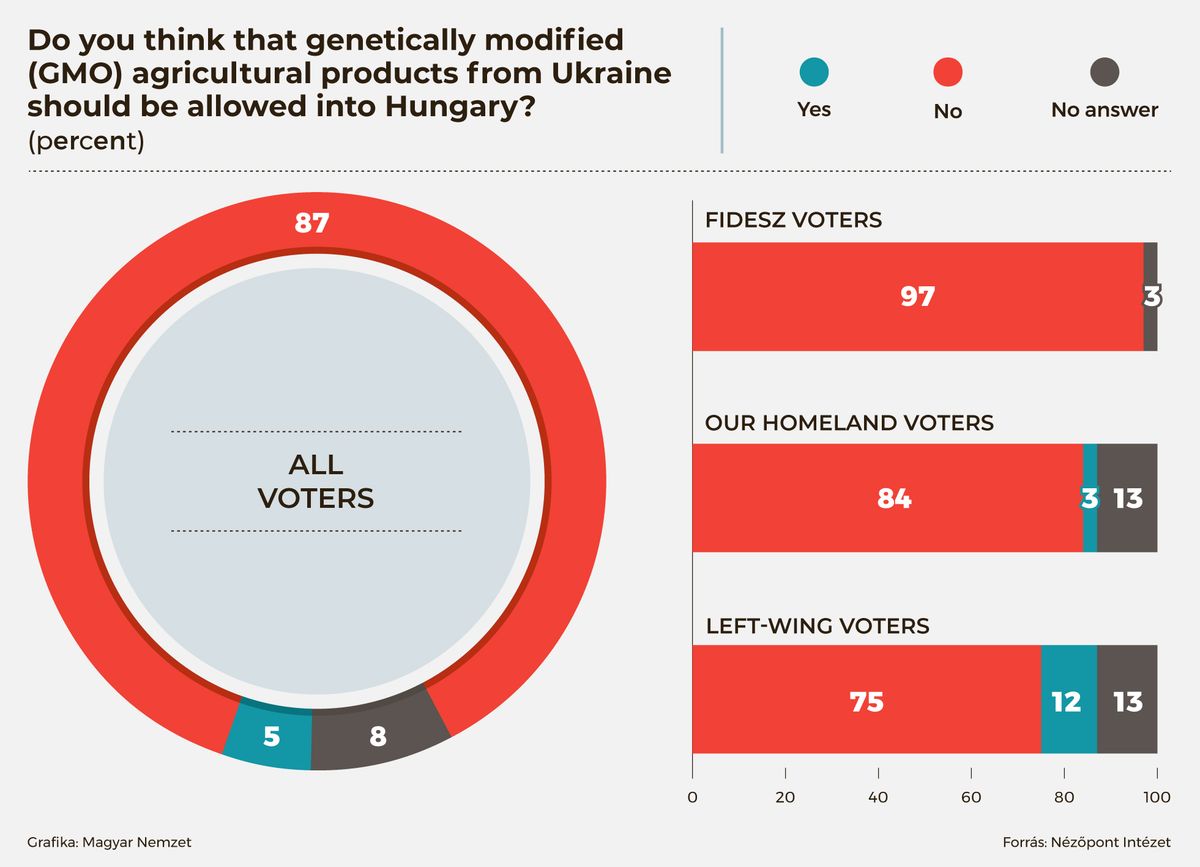The overwhelming majority of Hungarians, 87 percent, do not believe that genetically modified (GMO) Ukrainian agricultural products should be allowed into Hungary, with only five percent finding it acceptable, according to the Nezopont Intitute. This sentiment aligns with previous surveys indicating that a majority of Hungarians (62 percent) reject Ukraine's potential EU accession. One potential factor contributing to this stance is a widespread agreement against allowing GMO Ukrainian agricultural products into Hungary.

Regardless of political affiliation, the majority opposes opening borders to Ukrainian supplies,
with pro-government voters (97 percent) expressing unanimous disapproval, and a strong rejection rate (75 percent) even among left-wing voters.
Even among opposition voters of the radical right-wing Our Homeland (Mi Hazank) party, 84 percent reject the idea of opening borders to Ukrainian GMO products.
No specific social group, whether based on gender, age, education, or settlement type, shows a majority in favor of allowing Ukrainian GMO agricultural products into Hungary. The Nezopont Institute found that even among those with higher education (82 percent) and residents in the capital, four-fifths oppose Brussels' proposal.
They racalled that this was the Hungarian government's thirteenth National Consultation Survey since 2010, in which they aimed to gauge citizens' views on contentious issues with the European Commission. One of the eleven questions focused on the import of genetically modified wheat from Ukraine, following the EU's decision to open borders to genetically modified Ukrainian cereals. This move has posed challenges for the markets of East European countries. Given the significance of Hungarian citizens' opinions on this matter, Nezopont sought to understand whether they support or oppose the admission of Ukrainian GMO imports.
Nezopont Institute conducted its latest poll from December 4-6, interviewing 1,000 people by telephone. The sample is representative of the population aged 18 and over, considering gender, age, region, type of municipality, and education level for all surveys.






















Szóljon hozzá!
Jelenleg csak a hozzászólások egy kis részét látja. Hozzászóláshoz és a további kommentek megtekintéséhez lépjen be, vagy regisztráljon!